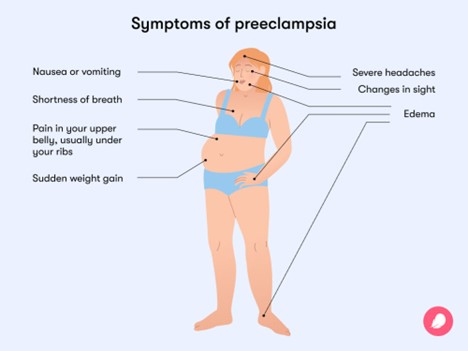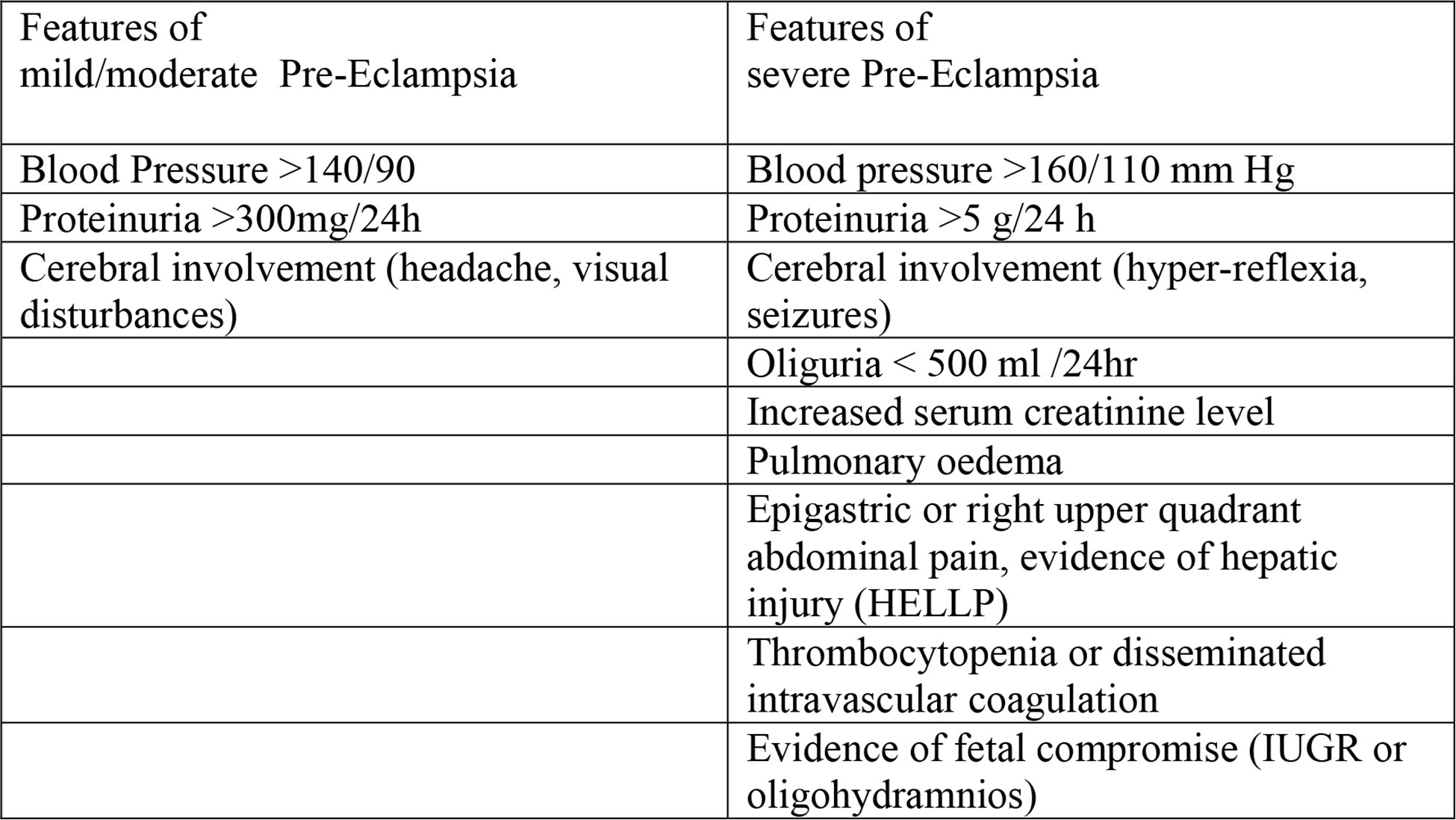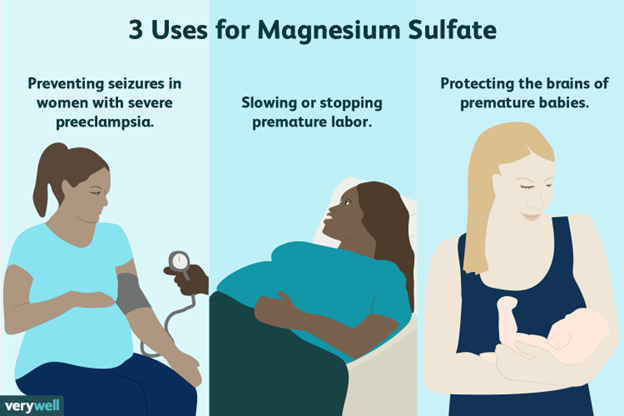A nurse is teaching a client with mild pre-eclampsia about the signs and symptoms that she should report to the health care provider.
Which of the following should the nurse include? (Select all that apply)
Sudden weight gain
Decreased fetal movement
Vaginal bleeding
Nausea and vomiting
Swelling of the hands and feet
Correct Answer : A,B
The correct answer is choice A and B. Sudden weight gain and decreased fetal movement are signs of pre-eclampsia, a condition that develops in pregnant women and is marked by high blood pressure and presence of proteins in urine. Pre-eclampsia can affect the blood supply to the placenta and the growth of the baby.

Choice C is wrong because vaginal bleeding is not a symptom of pre-eclampsia, but it may indicate other problems such as placental abruption or miscarriage.
Choice D is wrong because nausea and vomiting are not specific symptoms of pre-eclampsia, but they may occur in some cases. However, excessive vomiting and nausea may be a sign of severe pre-eclampsia.
Nursing Test Bank
Naxlex Comprehensive Predictor Exams
Related Questions
Correct Answer is A
Explanation
Epigastric pain is a sign of worsening pre-eclampsia that indicates liver damage.It can also be associated with HELLP syndrome, a severe complication of pre-eclampsia that involves hemolysis, elevated liver enzymes and low platelet count.

Choice B is wrong because facial edema is a common symptom of pregnancy and not specific to pre-eclampsia.
Choice C is wrong because proteinuria is a diagnostic criterion for pre-eclampsia, but not a sign of worsening condition.
Choice D is wrong because brisk reflexes are a normal finding in pregnancy and do not indicate pre-eclampsia severity.
Normal ranges for blood pressure are below 140/90 mmHg, and for proteinuria are less than 300 mg in 24-hour urine collection.
Correct Answer is A
Explanation
To prevent seizures.Magnesium sulfate is given to reduce central nervous system irritability and prevent seizures in clients with preeclampsia.Preeclampsia is a hypertensive disorder that occurs after 20 weeks of gestation and is characterized by elevated blood pressure, proteinuria, edema, headache, epigastric pain, and vision changes.

Choice B is wrong because magnesium sulfate does not lower blood pressure.Some antihypertensive drugs might be given to manage blood pressure in clients with preeclampsia.
Choice C is wrong because magnesium sulfate does not increase urine output.In fact, it can cause urinary retention and oliguria as adverse effects.
Choice D is wrong because magnesium sulfate does not promote fetal lung maturity.
It is given to prevent maternal complications, not fetal ones.Corticosteroids might be given to promote fetal lung maturity if delivery is anticipated before 34 weeks of gestation.
Whether you are a student looking to ace your exams or a practicing nurse seeking to enhance your expertise , our nursing education contents will empower you with the confidence and competence to make a difference in the lives of patients and become a respected leader in the healthcare field.
Visit Naxlex, invest in your future and unlock endless possibilities with our unparalleled nursing education contents today
Report Wrong Answer on the Current Question
Do you disagree with the answer? If yes, what is your expected answer? Explain.
Kindly be descriptive with the issue you are facing.
